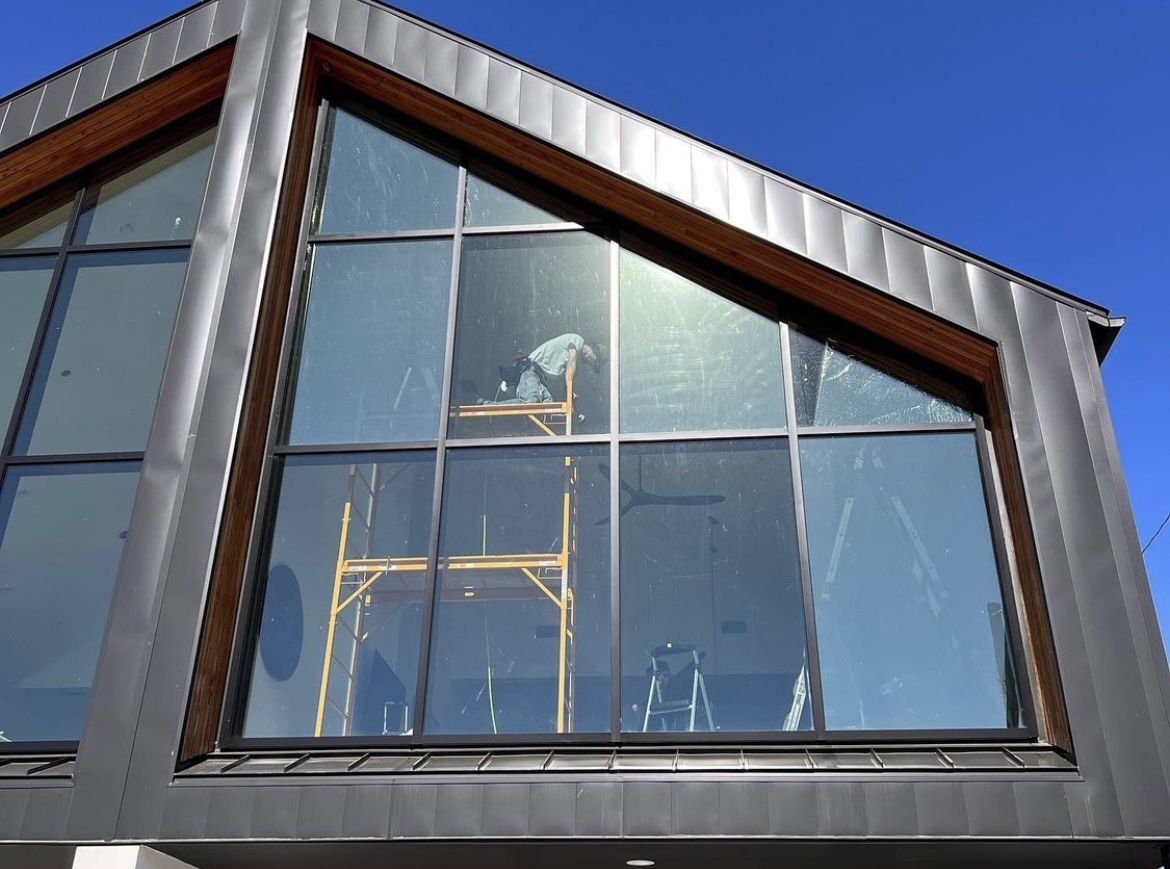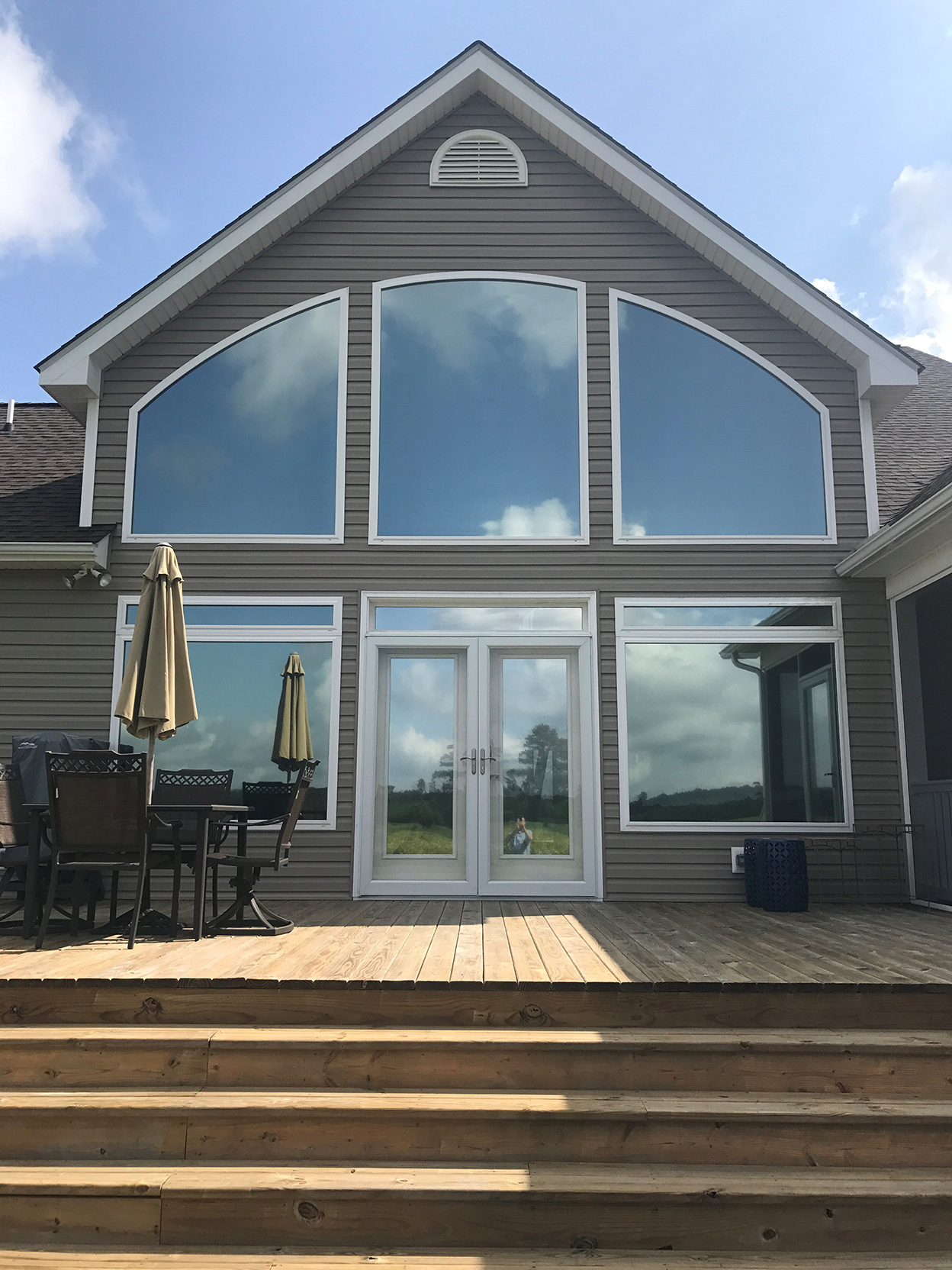Residential Window Tint: Maintain Your Home Cool in the Summer Season Heat
How Residential Home Window Tinting Enhances Your Home's Energy Efficiency
Residential home window tinting provides a compelling remedy for house owners seeking to enhance power efficiency within their home. By applying specialized movies to windows, it effectively lowers warm transfer, therefore supporting indoor temperature levels and lessening the need for too much heating or air conditioning. This not only cuts energy consumption however also offers an extra comfy environment by alleviating glow. Recognizing the subtleties of how tinting jobs and picking the proper type for your home can be crucial. Oddly, what variables should one consider prior to making this financial investment?
Understanding Window Tinting
Comprehending home window tinting is vital for home owners looking for to boost both comfort and power efficiency in their living areas. Residential Window Tint. Home window tinting includes the application of a slim movie to the interior or outside surface of glass home windows. This film can dramatically regulate the quantity of sunshine and warmth that goes into a home, hence influencing indoor environment conditions
There are numerous sorts of window tinting films readily available, each with unique properties. As an example, dyed films take in solar energy, while reflective movies disperse it far from the glass surface area. Ceramic films use an equilibrium of presence and warmth denial, making them a preferred selection among property owners. The performance of home window tinting is often gauged by its Visible Light Transmission (VLT) percentage, which suggests just how much light can go through the movie.
Benefits of Power Performance
Window tinting not only improves visual appeals however also plays a substantial role in boosting energy effectiveness within domestic spaces. By decreasing warm transfer via home windows, tinted movies create a more secure interior environment, which can lead to substantial decreases in power intake for heating & cooling. This energy effectiveness translates right into lower utility costs, giving homeowners with considerable lasting financial savings.

Furthermore, home window tinting improves the comfort of living areas. By minimizing glare and blocking dangerous UV rays, colored windows produce a more positive atmosphere, which can lead to enhanced health for occupants. The defense versus UV rays additionally aids protect furnishings and flooring from fading, adding to the durability of home products.
Just How Tinting Works
Tinting films run through a mix of advanced products and modern technologies created to regulate the amount of solar power entering a home. Largely composed of polyester, these movies often incorporate metallic or ceramic fragments that soak up and reflect warmth. This double capacity enables them to considerably decrease the penetration of ultraviolet (UV) rays and infrared radiation while allowing visible light to go through.
The performance of home window tinting is measured by its solar warmth gain coefficient (SHGC), which shows how much solar power is sent through the home window. Reduced SHGC worths are preferable as they represent better warm rejection. In addition, window colors can feature a variety of shades, permitting home owners to customize their visual choices while improving power effectiveness.
Furthermore, these movies work as a barrier, stopping warmth loss throughout cooler months by mirroring indoor heat back into the space. This thermal insulation result complements the cooling benefits obtained throughout warmer months, adding to a balanced indoor climate year-round. By managing solar energy properly, household window tinting not only enhances comfort however additionally plays an essential function in reducing energy intake and reducing utility costs.
Picking the Right Color

There are numerous types of window movies offered, consisting of dyed, metalized, and ceramic. Colored movies are affordable but might have restricted longevity. Metalized films offer much better warmth being rejected however can disrupt digital signals. Ceramic films give excellent heat control without compromising presence and are extremely durable, making them a preferred choice.
Noticeable light transmission (VLT) is one more important factor, as it suggests the amount of natural light that can go through the colored glass. Property owners need to pick a tint with a VLT that complements their lighting preferences while still providing sufficient glare reduction.
Furthermore, examining the solar warm gain coefficient (SHGC) can assist figure out just how well a color can obstruct warm from sunlight. A lower SHGC shows far better warmth control, inevitably boosting power effectiveness.
Installment and Maintenance Tips
Correct installation and upkeep are important parts in making best use of the advantages of domestic home window tinting. Experts also utilize specialized devices and methods, which can boost the resilience and performance of the tint.
Following installment, maintenance is necessary to prolong the life of the window film. It is suggested to wait at the very least thirty days prior to cleansing the colored home windows to enable the glue to treat fully. When cleansing, utilize a soft fabric and a mild, ammonia-free cleaner to prevent damaging the movie. Avoid abrasive products that might scratch the surface.
Dealing with these problems promptly can prevent further damages and maintain power efficiency. By adhering to these setup and upkeep tips, home owners can guarantee their home window tinting proceeds to give substantial energy financial savings and comfort for years to come.
Verdict
In conclusion, household window tinting serves as an effective option for find out boosting energy performance look at these guys within homes. By decreasing warmth transfer and blocking harmful UV rays, window movies contribute to decrease power consumption and improved indoor convenience.
Window tinting includes the application of a slim movie to the interior or outside surface of glass windows. By lowering heat transfer through windows, tinted films produce a more stable interior environment, which can lead to considerable decreases in power consumption for heating and cooling.The efficiency of home window tinting is gauged by its solar heat gain coefficient (SHGC), which suggests exactly how much solar power is sent via the home window. By taking care of solar power efficiently, property home window tinting not just boosts comfort yet additionally plays a vital role in decreasing energy usage and lowering utility bills.
By decreasing warm transfer and blocking dangerous UV rays, home window movies add to reduce power usage and enhanced indoor comfort.